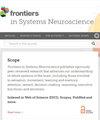Updating perspectives on spinal cord function: motor coordination, timing, relational processing, and memory below the brain
IF 3.5
4区 医学
Q2 NEUROSCIENCES
引用次数: 0
Abstract
Those studying neural systems within the brain have historically assumed that lower-level processes in the spinal cord act in a mechanical manner, to relay afferent signals and execute motor commands. From this view, abstracting temporal and environmental relations is the province of the brain. Here we review work conducted over the last 50 years that challenges this perspective, demonstrating that mechanisms within the spinal cord can organize coordinated behavior (stepping), induce a lasting change in how pain (nociceptive) signals are processed, abstract stimulus–stimulus (Pavlovian) and response-outcome (instrumental) relations, and infer whether stimuli occur in a random or regular manner. The mechanisms that underlie these processes depend upon signal pathways (e.g., NMDA receptor mediated plasticity) analogous to those implicated in brain-dependent learning and memory. New data show that spinal cord injury (SCI) can enable plasticity within the spinal cord by reducing the inhibitory effect of GABA. It is suggested that the signals relayed to the brain may contain information about environmental relations and that spinal cord systems can coordinate action in response to descending signals from the brain. We further suggest that the study of stimulus processing, learning, memory, and cognitive-like processing in the spinal cord can inform our views of brain function, providing an attractive model system. Most importantly, the work has revealed new avenues of treatment for those that have suffered a SCI.更新脊髓功能视角:大脑下方的运动协调、计时、关系处理和记忆
研究大脑内部神经系统的人历来认为,脊髓的低级过程是以机械方式传递传入信号和执行运动指令。根据这种观点,抽象时间和环境关系是大脑的职责。在此,我们回顾了过去 50 年中对这一观点提出质疑的工作,证明脊髓内的机制可以组织协调行为(步态)、诱导疼痛(痛觉)信号处理方式的持久变化、抽象刺激-刺激(巴甫洛夫式)和反应-结果(工具式)关系,以及推断刺激是以随机还是有规律的方式发生。这些过程的基础机制取决于信号通路(如 NMDA 受体介导的可塑性),类似于大脑依赖性学习和记忆中的信号通路。新的数据显示,脊髓损伤(SCI)可通过降低 GABA 的抑制作用来实现脊髓内的可塑性。我们认为,传递到大脑的信号可能包含有关环境关系的信息,脊髓系统可以根据来自大脑的下行信号协调行动。我们进一步提出,对脊髓中的刺激处理、学习、记忆和认知类处理的研究可以为我们了解大脑功能提供信息,从而提供一个极具吸引力的模型系统。最重要的是,这项研究揭示了治疗脊髓损伤患者的新途径。
本文章由计算机程序翻译,如有差异,请以英文原文为准。
求助全文
约1分钟内获得全文
求助全文
来源期刊

Frontiers in Systems Neuroscience
Neuroscience-Developmental Neuroscience
CiteScore
6.00
自引率
3.30%
发文量
144
审稿时长
14 weeks
期刊介绍:
Frontiers in Systems Neuroscience publishes rigorously peer-reviewed research that advances our understanding of whole systems of the brain, including those involved in sensation, movement, learning and memory, attention, reward, decision-making, reasoning, executive functions, and emotions.
 求助内容:
求助内容: 应助结果提醒方式:
应助结果提醒方式:


